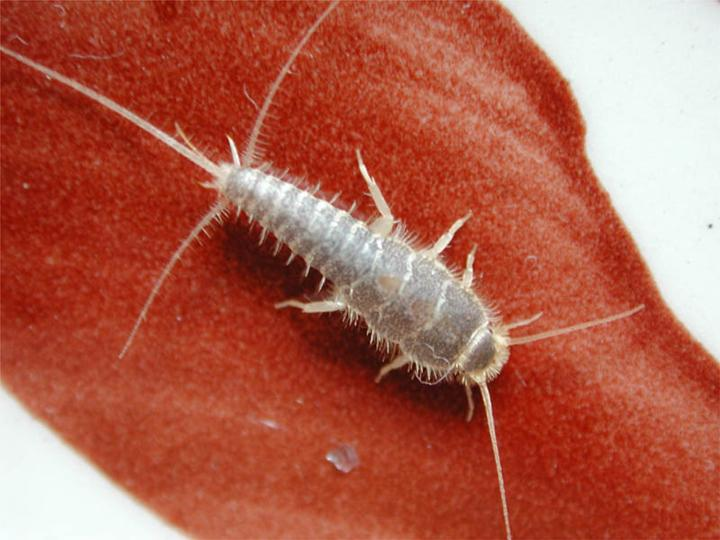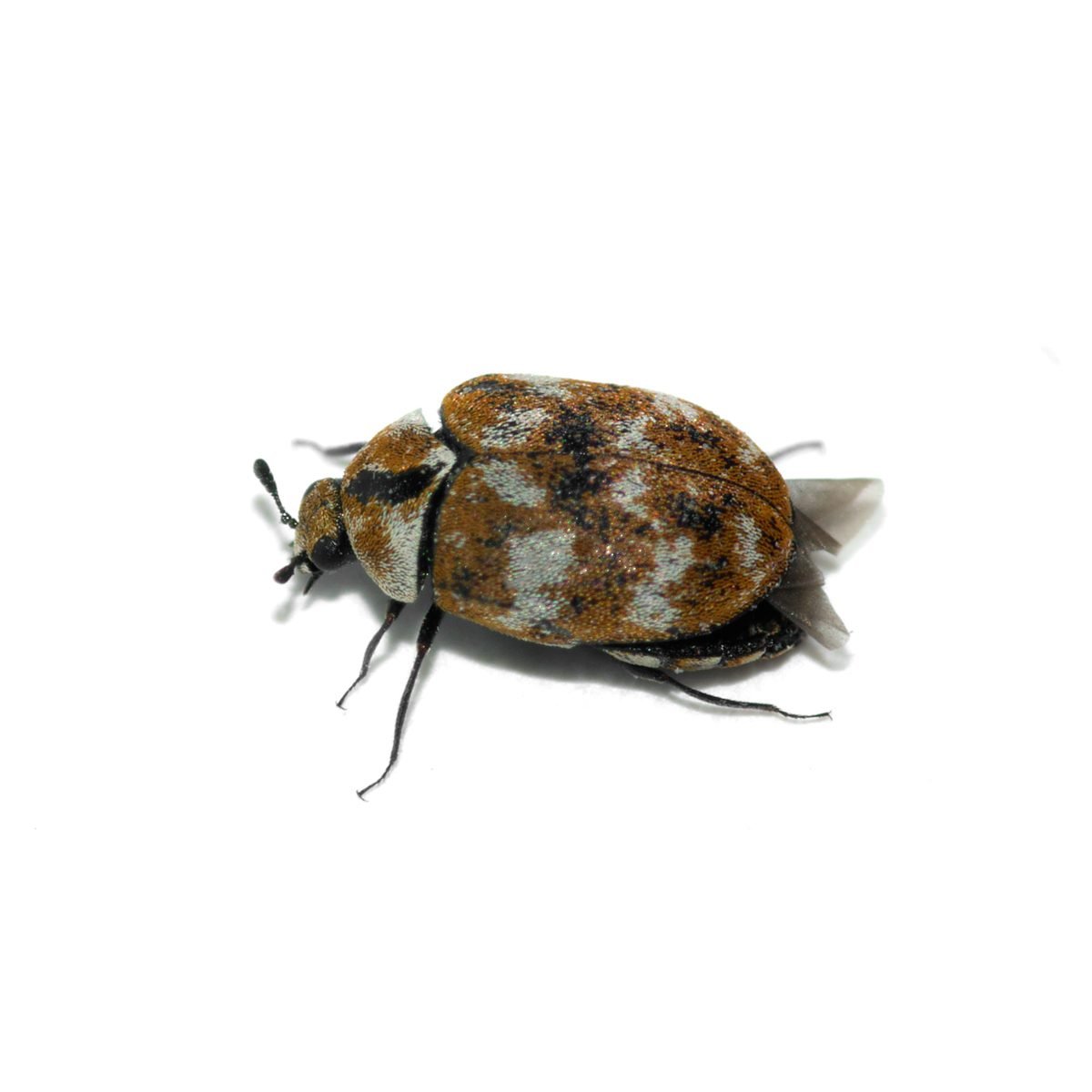- Get link
- X
- Other Apps
Cockroaches which you may see scurrying across the room when you turn on a light are omnivorous bugs that eat a wide variety of organic material including garbage leftover food and even fingernails. Adult moths do not actually eat clothing but they do deposit eggs that turn into hungry larvae.
 Identifying And Controlling Clothes Moths Carpet Beetles And Silverfish Agriculture And Food
Identifying And Controlling Clothes Moths Carpet Beetles And Silverfish Agriculture And Food
They also feed on dead insects pet food crumbs lint and soiled fabric.

Bugs that eat wool. Carpet beetles are oval in shape and their size vary from 2 mm to 5 mm. If you ever see a very small black or tan bug on your clothing or closet walls its probably a carpet beetle. Carpet beetle larvae are more adventurous and may crawl from one room to another or from one apartment to another.
Carpet beetle larvae eat fur feathers mohair wool and other soft natural fibers. The larvae of the carpet beetle will eat wool carpet and wool rugs can eat lots of it and will permanently damage the carpet. The primary source of food for carpet beetles is pollen and nectar while the larvae can feed upon fabric and other animal-made products such as wool feathers leather and fur.
They prefer to live in dark places like your closet. Wool moths clothes moths closet moths cocoon moths there are lots of different names for a couple of different varieties of these destructive little insects. Because wool is naturally moisture-wicking and antimicrobial its too dry of an environment for these bugs and therefore is not an ideal place for them to live.
Damage to articles may consist of irregular surface feeding or holes eaten completely through the. Their larvae will also feed on dust lint paper and materials soiled with oils. They can feed on mixtures of natural and synthetic fibres but cannot feed on materials made only from synthetic fibres.
They lay their eggs on animal fibers like wool which when. They typically prefer to eat animal-based materials such as silk wool and leather. Synthetic carpet is not attacked or damaged by carpet beetle grubs.
In Colorado carpet beetles are far more common and damaging to woolens than are clothes moths. The larvae of carpet beetles and clothes moths eat clothes wool in particular. Moths come to mind most frequently when we think of fabric-eating bugs.
Two types of moths are known to plague wool silk cashmere and other textile items. Consider the wool the table that holds their feast that also gets eaten away in the process. Other bugs not known for eating wool silverfish termites and other creepy crawlies can eat wool if there is something spilled on the fibers that they find appetizing.
Webbing clothes moths and casemaking clothes moths. Even pantry moths like Indian Meal Moths will eat wool if its available to them. When the infestation of this bug is severe it can damage large areas of the affected garment.
Clothes moths and carpet beetles will eat wool silk hair pet fur feathers and leather. Wool-eating bugs such as carpet beetles termites silverfish and others are literally invited to dine on your rug well not exactly on but the rug itself if there is something they fund yummy is spilled on the fibers. The head of this beetle is white and its wings are of black and white with gray spots.
Clothes moth larvae preferentially feed on natural products such as cotton silk wool feathers fur hair leather and upholstered furniture. It is important to remember that textile insects such as carpet beetles and clothes moths can digest protein fibers such as wool silk and specialty hair fibers but they can also be found on synthetic fibers if they contain protein substances. Once inside the larvae may crawl from room to room item to item slowly causing widespread fabric damage.
Among the few which do are larvae of the webbing clothes moths Tineola bisselliella and the carpet beetles Dermestidae. Larvae will also feed on lint dust and paper products. Carpet beetles are very different in appearance but can cause every bit as much devastation.
Ability to digest wool. The two biggest wool rug culprits are moths and carpet beetles. All flourish in more humid environments.
They thrive in damp dark places where bacteria and fungus grow. The wool is just the holder of the meal for them and gets eaten away in the process. Basically they survive on dead animal products like wool fur silk leather etc.
When given an opportunity they will occasionally eat cashmere wool items. Dust mites are microscopic arthropods not insects and thought to be the most common trigger for allergies and asthma. What do they look like.
Carpet beetles are sometimes described as tiny bugs in your closet as theyre very small by nature and move very slowly. Silverfish will feed on cotton paper products glue adhesives and starches. The beetles live outside but will come inside to lay their eggs on juicy looking carpet any time of the year.
Containing wool or other animal fibers such as secondhand clothing used furniture and woolen scraps exchanged for making rugs or quilts.
 How To Help Stop Bugs That Eat Clothes Terminix
How To Help Stop Bugs That Eat Clothes Terminix
Identifying And Controlling Clothes Moths Carpet Beetles And Silverfish Agriculture And Food
:max_bytes(150000):strip_icc()/ScreenShot2020-05-14at4.27.16PM-cbc974882a4f4e21be9b79b57be3d70d-e5029c982640433f97a2ed089ce89b62.png) How To Control And Identify Bugs That Eat Clothes
How To Control And Identify Bugs That Eat Clothes
:max_bytes(150000):strip_icc()/GettyImages-126542096-57f013183df78c690f7c8802.jpg) How To Control And Identify Bugs That Eat Clothes
How To Control And Identify Bugs That Eat Clothes
 Facts About Carpet Beetle And Moth Attacks In Wool Carpet Ec Carpets
Facts About Carpet Beetle And Moth Attacks In Wool Carpet Ec Carpets
 What S Eating Your Clothes Identify And Get Rid Of Bugs Black Carpet Mildew Remover For Fabric Eating Insects
What S Eating Your Clothes Identify And Get Rid Of Bugs Black Carpet Mildew Remover For Fabric Eating Insects
 5 Insects That May Be Eating Your Clothing Family Handyman
5 Insects That May Be Eating Your Clothing Family Handyman
 Insects That Eat Clothes Terminix
Insects That Eat Clothes Terminix
Weekly Rec Keeping Bugs Out Of Your Stash Roving Crafters
/insects-that-eat-holes-in-clothes-2146424_V2-51f91eb4a8b7434fa7858fda8744749a.png) Identify 8 Insects That Eat Holes In Clothes
Identify 8 Insects That Eat Holes In Clothes
Clothes Moths And Carpet Beetles
 Carpet Beetles And Clothes Moths What They Are What They Eat And How To Control Them
Carpet Beetles And Clothes Moths What They Are What They Eat And How To Control Them
:max_bytes(150000):strip_icc()/Carpet-Beetle-NCSU-57f02f265f9b586c35e41cd5.jpg) Identify 8 Insects That Eat Holes In Clothes
Identify 8 Insects That Eat Holes In Clothes
 Carpet Beetles And Clothes Moths What They Are What They Eat And How To Control Them
Carpet Beetles And Clothes Moths What They Are What They Eat And How To Control Them
Comments
Post a Comment